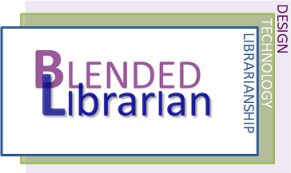At the Blended Librarians Online Learning Community we have delved somewhat infrequently into the world of Open Educational Resources (OER) and what we can do to promote their use to our faculty. In the past John and I have engaged the community in conversations about digital learning objects (what many folks now point to as OER in repositories such as MERLOT II). In addition we have engaged in discussions about OER, such as when we invited Quill West to be our guest.
In addition to whatever role we might play in promoting the adoption on our campuses – and there is much territory to cover in that capacity from strategically leading the campus to develop an institutional OER strategy to doing the grunt work of encouraging individual faculty to adopt an open textbook for their course – we can also be participants in the textbook revolution by adopting open textbooks when we are the instructors.
Most Blended Librarians have at one time served or will serve in an instructional capacity to teach undergraduate and graduate college students how to conduct research. Whether they teach a for-credit course or just one-shot sessions on demand, there are now two open textbooks to consider for integration into the instruction.
The Information Literacy User’s Guide: An Open Online Textbook is the older of the two. It is authored by librarians who are mostly at the University at Albany, State University of New York. The lead author is the well-known information literacy expert Trudy Jacobson. According to the authors the book”helps students examine their roles as information creators and sharers and enables them to more effectively deploy related skills.” It includes case studies and scenarios, many hands-on exercises, and interactive quizzes.
The new and somewhat recently released Choosing & Using Sources: A Guide to Academic Research comes from librarian-educators at The Ohio State University. The authors describe it as presenting a “process for academic research and writing, from formulating your research question to selecting good information and using it effectively in your research assignments”. Similar to the other book there are self-quizzes and activities in each chapter to reinforce core concepts for the learner who then applies them.
My guess is that most academic librarians would not be in a position to assign either one of these books as a required or even recommended reading for a course at their institution. I do think either one or both offer great possibilities as a tool for flipping the library instruction session. Rather than walking into a room full of students who know little or nothing about college-level research skills, why not collaborate with the instructor to have the student conduct a recommended activity or quiz in advance of the session (call that flipping the instruction if you will). In fact, these open textbooks could be directly adopted by faculty who want to take primary ownership for teaching their students to become effective researchers.
They could also be of value to LIS educators teaching courses in instruction for graduate students. LIS educators may have few if any open textbooks to choose from so they should welcome these two into the curriculum.
Seeing the appearance of open textbooks in our own profession is encouraging, and possibly gives us some “we are walking the talk” credibility among our instructor colleagues. So many thanks for our colleagues at SUNY and OSU for developing these excellent open textbooks. Let’s show our appreciation by putting them to good use.
